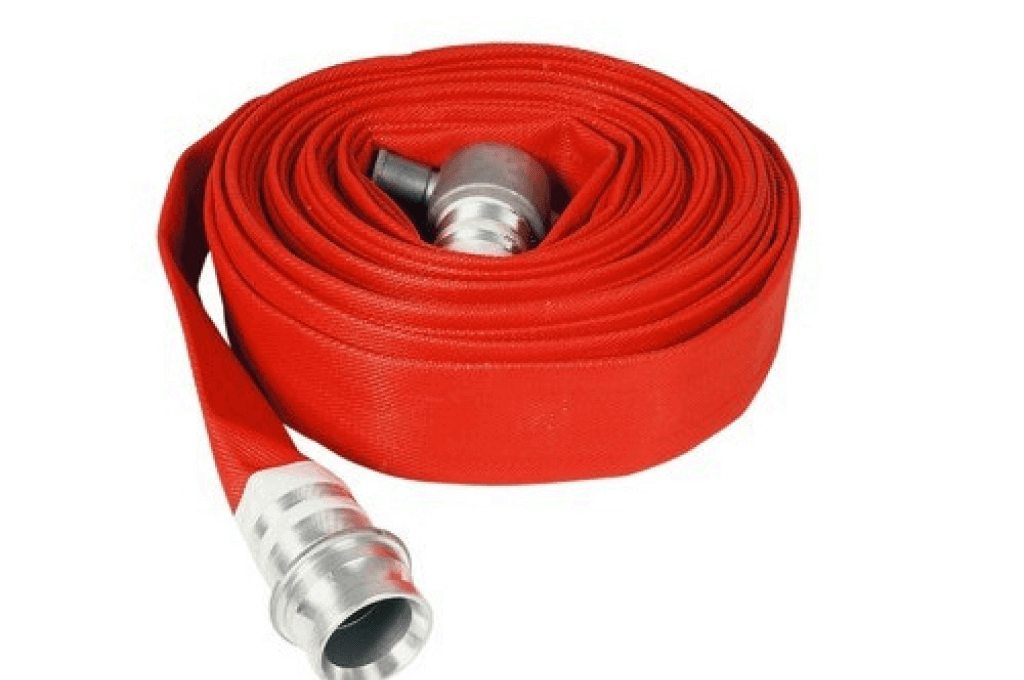
RRL
Brands
- EXFLAME
- SAFEX
- MINIMAX
- JYOTI
- GETECH
- NEWAGE
- CEASEFIRE
- SAFEGUARD
- & Many More
In fire fighting, “RRL” stands for “Reinforced Rubber Lined.” RRL refers to a type of fire hose commonly used by firefighters to transport water or firefighting agents from a water source to the fire’s location. These hoses are designed to be robust, durable, and capable of withstanding high water pressure, making them suitable for the demanding conditions of firefighting operations.
The construction of RRL hoses involves a reinforcement layer made of high-strength fibers, usually made of polyester or synthetic materials, which provides added strength and flexibility. This reinforcement layer is then covered with a rubber lining, which offers resistance to abrasion, aging, and deterioration due to exposure to sunlight and harsh environmental conditions.
The primary advantages of RRL hoses are their ability to withstand wear and tear during frequent use, their resistance to kinking and twisting, and their flexibility, which makes them easy to maneuver in challenging firefighting scenarios. Additionally, RRL hoses have excellent water-carrying capacity, allowing firefighters to deliver water with high pressure and flow rates to combat fires effectively.
These hoses are commonly found in fire stations, fire trucks, and other firefighting equipment, serving as a critical tool for fire brigades to quickly and efficiently tackle various types of fires, including structural fires, wildfires, and industrial fires. Their reliability and performance make RRL hoses an essential part of any firefighting arsenal, enabling firefighters to respond promptly to fire emergencies and protect lives and properties.
Selecting the right Reinforced Rubber Lined (RRL) supplier is crucial for ensuring the quality, durability, and performance of your products. Whether you’re in the mining, chemical processing, or water treatment industry, the choice of supplier can significantly impact your operations. This guide will walk you through the essential factors to consider and steps to take when choosing an RRL supplier.
Key Factors to Consider When Choosing an RRL Supplier
Quality of Materials
The quality of the rubber and reinforcement materials used in RRL products is paramount. High-quality materials ensure the longevity and effectiveness of the lining.
Customization Capabilities
Different applications have unique requirements. A supplier that offers customization options can provide tailored solutions that meet your specific needs.
Technical Expertise
A supplier with technical expertise can offer valuable insights and recommendations, ensuring that you get the best possible RRL products for your application.
Top Qualities of a Reliable RRL Supplier
Certifications and Compliance
Look for suppliers with relevant certifications and compliance with industry standards. This indicates a commitment to quality and reliability.
Proven Track Record
A supplier with a history of successful projects and satisfied clients is more likely to deliver quality products and services.
Customer Support and Service
Excellent customer support is essential for addressing any issues that may arise and ensuring a smooth, hassle-free experience.
Steps to Identify Potential RRL Suppliers
Conducting Online Research
Start by researching potential suppliers online. Look for reviews, ratings, and testimonials to gauge their reputation.
Seeking Recommendations
Ask for recommendations from industry peers or associations. Word-of-mouth referrals can provide valuable insights.
Attending Industry Trade Shows
Industry trade shows are excellent venues to meet potential suppliers, see their products firsthand, and discuss your needs directly.
Evaluating Supplier Quality
Reviewing Supplier Credentials
Check the supplier’s credentials, including certifications, industry affiliations, and years in business.
Assessing Production Facilities
Visit the supplier’s production facilities if possible. This allows you to see their operations and assess their manufacturing capabilities.
Requesting Samples
Request samples of their RRL products to evaluate the quality and suitability for your application.
Understanding Supplier Capabilities
Manufacturing Capabilities
Ensure the supplier has the necessary manufacturing capabilities to meet your volume and quality requirements.
Customization Options
Discuss the supplier’s ability to customize RRL products to your specifications, including material choices and design modifications.
Delivery and Logistics
Consider the supplier’s delivery capabilities and logistics. Reliable delivery schedules are crucial to avoid disruptions in your operations.
Supplier Engagement and Communication
Initial Contact and Inquiry
Make initial contact with potential suppliers to discuss your needs and gather preliminary information.
Asking the Right Questions
Prepare a list of questions to ask suppliers, covering aspects such as material quality, production timelines, and customization options.
Building a Relationship
Establishing a strong working relationship with your supplier can lead to better communication, improved service, and mutual trust.
Negotiating Terms and Conditions
Pricing and Payment Terms
Negotiate fair pricing and agreeable payment terms that align with your budget and cash flow requirements.
Delivery Schedules
Set clear delivery schedules to ensure timely receipt of RRL products, avoiding any delays in your operations.
Warranty and After-Sales Support
Discuss warranty terms and after-sales support to ensure you have coverage for any potential issues with the products.
Finalizing the Supplier Selection
Comparing Multiple Suppliers
Compare the offerings of multiple suppliers, considering factors such as quality, price, and service.
Making an Informed Decision
Based on your comparisons, make an informed decision on the best supplier that meets your needs and expectations.
Long-Term Supplier Relationship Management
Regular Performance Reviews
Conduct regular performance reviews to ensure the supplier continues to meet your standards and expectations.
Continuous Improvement
Work with your supplier to identify areas for improvement and implement changes to enhance product quality and service.
Managing Changes and Challenges
Be prepared to manage any changes or challenges that arise, maintaining open communication with your supplier.
Future Trends in RRL Supply
Technological Advancements
Stay informed about technological advancements in RRL production that can improve product quality and performance.
Market Dynamics
Monitor market dynamics, including supply chain trends and industry developments, to stay ahead of potential challenges and opportunities.
Conclusion
Choosing the right Reinforced Rubber Lined supplier is essential for ensuring the quality and performance of your products. By considering factors such as material quality, customization capabilities, and supplier expertise, you can make an informed decision that benefits your operations. Building a strong, long-term relationship with your supplier will lead to continuous improvements and sustained success.


